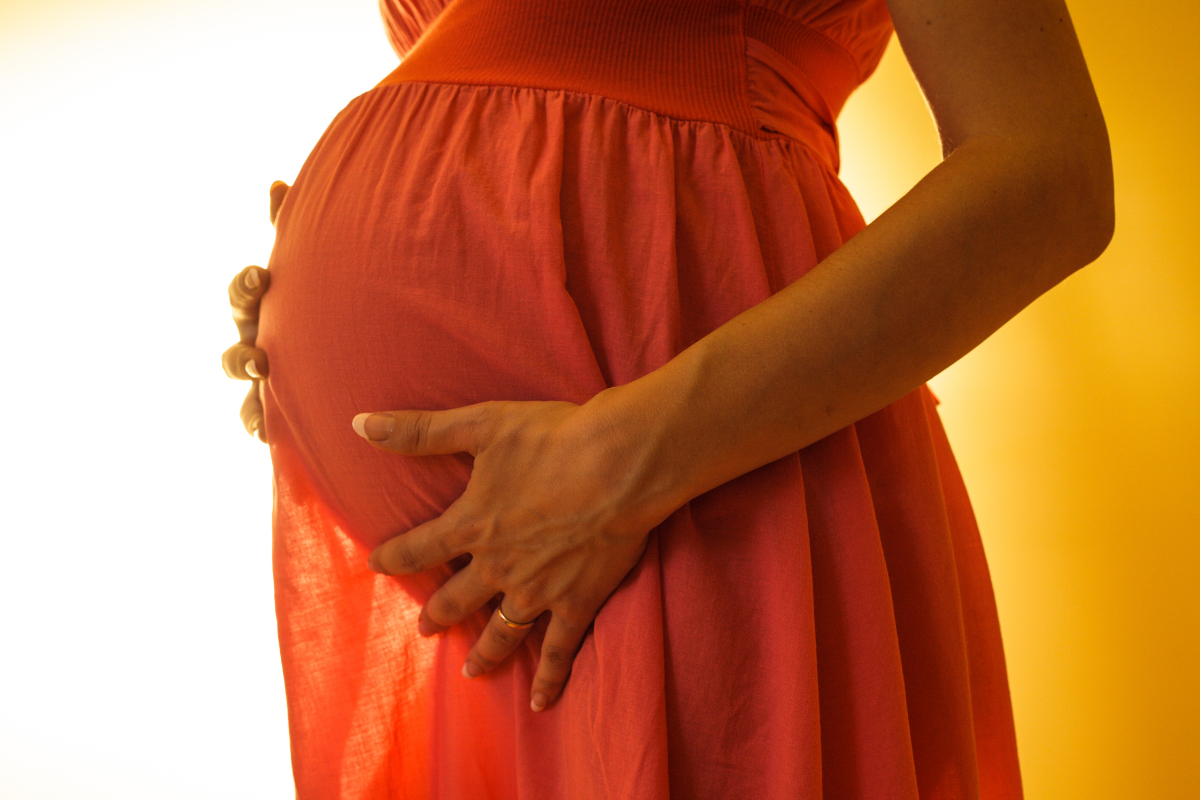What is hyponatremia?
A mother’s body undergoes many changes while carrying a baby inside of her. Some of the changes are well-known and visible, like weight gain and a growing belly, while a few unexpected bodily changes catch a pregnant woman off guard.
Hyponatremia, or low sodium level, is a common but unanticipated change in pregnancy. Pregnant women are at risk of developing hyponatremia as their blood volume expands during pregnancy.
Low levels of sodium in the blood can have significant adverse effects on the mother as well as on the developing baby. It is, therefore, essential to identify hyponatremia and begin treatment immediately.
That is why we have put together this article to understand the fluid and electrolyte balance during pregnancy and the mechanism behind hyponatremia in the peripartum period. In addition, we will talk about how to spot hyponatremia in a pregnant woman, who is prone to develop it, and how it can be corrected.
Understanding The Fluid And Electrolyte Balance In Pregnancy
Between 50 and 60 percent of the body is fluids, including blood, lymphatics, and water. These fluids help your organs work properly by moving the blood throughout your circulatory system. But if you have too much of it, it can lead to many problems, like hyponatremia. This can be a problem also for your body to be carrying excess fluids and can be visibly seen when ladies have swollen ankles.
Excess hydration and dehydration are both problems that can be managed. This can be managed with Isomum along with receiving guidance from a professional as well.
Pregnancy is a state of fluid overload or hypervolemia, with the maternal blood volume increasing by 1.5 liters during pregnancy. At term, the blood volume is approximately 50% more than the non-pregnant levels. This is initiated by the growing and demanding baby. Several other factors also contribute to hypervolemia in pregnancy, such as:
- Hormonal changes during pregnancy, like increased estrogen and progesterone, cause the body to retain more water.
- Changes in the process of maintaining water and sodium balance across membranes in the maternal body.
- Increase in the activity of the renin-angiotensin-aldosterone system (RAAS), a potent promoter of water retention in the body.
- Increased deoxycorticosterone and aldosterone, the steroid hormones that promote salt retention in the body leading to fluid retention.
- In normal pregnancy, there is an increased synthesis and release of vasopressin, an anti-diuretic hormone (ADH) that causes increased water reabsorption.
- The circulating levels of atrial natriuretic peptide (ANP), which primarily works to increase the renal excretion of salt and water, are decreased during pregnancy.
Pregnancy-induced hypervolemia is thought to provide an advantage to the woman’s body, protecting her from hemodynamic instability due to blood loss at the time of delivery. However, this can lead to dilutional or hypervolemic hyponatremia, a condition more common during labor and the postpartum period.
In non-pregnant women, a blood sodium concentration of 135–145 mmol/L is considered normal, whereas, in pregnancy, a lower concentration of 130–140 mmol/L is considered normal.
What Causes Low Sodium During Pregnancy?
Hyponatremia is the most frequently encountered electrolyte abnormality in pregnancy. Although there haven’t been enough studies done to draw firm conclusions, it is believed that consuming too much water during labour may result in low blood levels of sodium.
Dilutional hyponatremia occurring during labor, and after that, happens if a pregnant woman drinks fluid that is not rich in sodium. This ultimately leads to dilution of the blood and a fall in the blood sodium levels.
Oxytocin is a natural hormone that stimulates uterine contractions in labor and lactation after delivery. In addition, this peptide hormone, produced in the hypothalamus and released into the blood by the pituitary gland, is an anti-diuretic at high concentrations.
During labor, the body produces potent amounts of oxytocin. Additionally, synthetic oxytocin is usually administered through an IV line for the induction or augmentation of labor.
Increased supplementation of IV fluids along with oxytocin plays a role in the development of dilution hyponatremia in pregnant women. This is worsened by the reduced ability to excrete excess water in late pregnancy.
Several other factors increase the levels of anti-diuretic hormones in the peripartum period. The pain and stress of labor increase the secretion of ADH, retaining more water in the body. All of this dilutes the sodium in the blood, leading to hyponatremia.
Risk Factors For Peripartum Hyponatremia
When a woman is in labor, several factors increase the risk of hyponatremia, such as:
- Excessive administration of fluids (over 1,500 ml).
- Infusion of insulin and dextrose.
- Oxytocin infusion.
- Medications like proton pump inhibitors (e.g., omeprazole), amlodipine, antidepressants, antiepileptic drugs, diuretics, and antipsychotic medications.
Signs And Symptoms Of Hyponatremia
The signs and symptoms of hyponatremia depend on the speed at which the sodium levels drop and the sodium concentration in the blood.
Early symptoms of hyponatremia in labor are headache, nausea, loss of appetite, and a lack of energy, interest, or concern. These may be confused with symptoms of pregnancy, labor, or other common conditions like preeclampsia because they don’t appear to be specific to hyponatremia.
Worsening hyponatremia can lead to drowsiness, muscle cramps, disorientation, confusion, agitation, seizures, hallucination, reduced consciousness levels, respiratory arrest, coma, and even death.
Treatment For Hyponatremia In Peripartum Period
Drinking fluids during labor is crucial to staying hydrated, keeping your muscles functioning properly, and maintaining energy. Dehydration can affect how well your labor goes as well as cause other problems like fever, an increase in the mother’s heart rate, an increase in the fetal heart rate, etc.
It’s a good idea to alternate plain water with electrolyte fluids to stay hydrated and avoid hyponatremia or water intoxication in labor. Without electrolytes, muscles weaken, and uterine contractions may be less effective.
Electrolytes are necessary for muscle contractions, maintaining blood pressure and pH levels, and optimal nerve functioning. It also helps with recovery after birth because electrolytes assist in rebuilding damaged tissue as well.
Take Home Message
Hyponatremia is a common but unanticipated change in pregnancy. Low levels of sodium in the blood can have significant adverse effects on the mother as well as on the developing baby. And drinking fluids poor in sodium is only going to make things worse.
Switch to electrolyte water in active labor, and sip between contractions. Electrolytes strengthen the muscle and stimulate uterine contraction. Extra fluids also mean more trips to the bathroom, which can expedite the process!
References
- Thaker, Shilpa. “Recognizing and Avoiding Significant Maternal Hyponatremia.” Journal of South Asian Federation of Obstetrics and Gynaecology, vol. 12, no. 2, Jaypee Brothers Medical Publishing, 2020, pp. 100–03. Crossref, https://doi.org/10.5005/jp-journals-10006-1770.
- Costantine, Maged M. “Physiologic and pharmacokinetic changes in pregnancy.” Frontiers in pharmacology vol. 5 65. 3 Apr. 2014, doi:10.3389/fphar.2014.00065
- Morton, Adam et al. “Pregnancy outcomes in women with hyponatraemia and preeclampsia: Case series and literature review.” Pregnancy hypertension vol. 26 (2021): 38-41. doi:10.1016/j.preghy.2021.08.116


